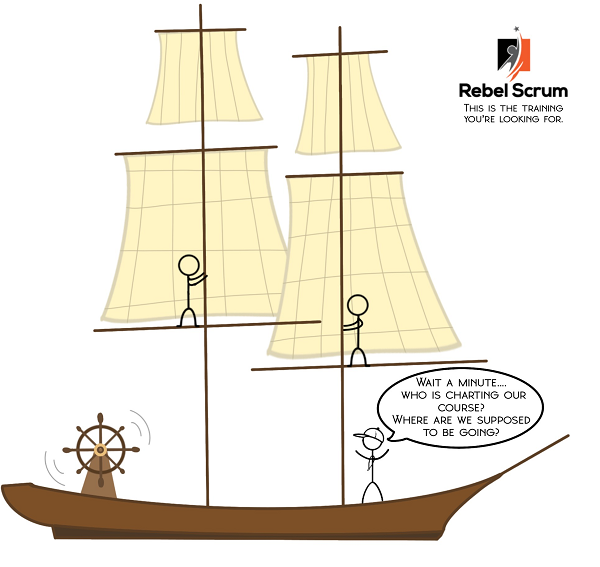The Product Owner accountability is crucial for the success of a Scrum team. The Product Owner is responsible for maximizing the value of the product which includes accountability for the content and ordering of the Product Backlog. The Product Backlog is a constantly evolving and structured list of items that outline the necessary improvements for the product. It serves as the sole source of work for the Scrum Team. The Product Owner is accountable for ensuring that the Product Backlog includes a Product Goal which is in alignment with organizational strategy and that the Product Backlog contains a list of ordered Product Backlog items which reflect what the Scrum team will work on next.
However, there are certain misconceptions and patterns that can hinder the effectiveness of the Product Owner and lead to conflicts within the Scrum Team. In this article, we will explore three common anti-patterns related to the Product Owner's accountability in Scrum and discuss strategies to overcome them.
Myth: Anyone can add an item to the Product Backlog
Myth: One prevalent misconception is that anyone can add items to the Product Backlog. However, this approach can result in several problems. The Product Owner's primary responsibility is to maximize the value of the product, and the Product Backlog serves as a strategic plan to achieve the desired future state of the product. Allowing unrestricted additions to the Product Backlog can make the product directionless, like a ship without a rudder.
Do this instead: Instead, stakeholders who wish to submit ideas should collaborate with the Product Owner to determine the best method for doing so. Regular stakeholder meetings or a structured form for idea submissions can facilitate this process. Face-to-face conversations, even if conducted virtually, are highly valuable, as they promote effective communication and avoid incomplete or ambiguous information.
Maha M., an experienced Product Owner in the professional services industry, emphasizes, "If anyone can add anything, it really takes away from my ability as a Product Owner to create a roadmap for the product." To address this challenge, Product Owners should establish additional communication channels to streamline idea submission and ensure a clear understanding of stakeholders' expectations.
Myth: Two Product Owners for a single Product Backlog
Myth: In a misguided attempt to ‘help’ Product Owners with their important responsibilities, some organizations establish two Product Owners for a single Product. However, while this may seem, at first, to be helpful, this actually causes a lot of problems for both Product Owners involved. When multiple Product Owners exist, conflicting ideas and visions may arise, diluting the product's direction and impeding progress.
Do this instead: There should only be one Product Owner per Product, but that doesn’t mean that the Product Owner must personally create each Product Backlog item on the Product Backlog or that the Product Owner must single handedly update the roadmap, vision, metrics and other items that they are accountable for. Instead, the Product Owner can delegate tasks such as creating Product Backlog items, maintaining the roadmap, or gathering metrics to Developers on the Scrum team. However, it is important to note that while the Product Owner may delegate as needed, the Product Owner ultimately remains accountable for items in the Product Backlog as well as the product forecast or roadmap, thus ensuring that there is a single, unifying vision and goal for the product and that the Product Backlog is in alignment with that vision.
If the Product Owner is delegating the creation of Product Backlog items to Developers, what does that mean? In Scrum, the term "Developers" can be misleading if interpreted narrowly to refer only to software developers. The Scrum Guide emphasizes that Scrum teams should be cross-functional, meaning they possess all the necessary skills and expertise required to deliver a valuable product increment.
While Developers on the Scrum team may indeed have software development skills, Scrum teams can include individuals with various skills, such as business analysts, quality assurance professionals, designers, testers, technical writers, and any other skills necessary for the product development process. The catalog of necessary skills will depend on the nature of the product. If the product is to deliver human resources functions to the organization, Developers may include Human Resource representatives. Each Developer on the Scrum team may specialize in one unique area, or Scrum teams may have individuals who are ‘T-shaped’ meaning that each member may have a little of all of these skills.
The goal is to have a diverse team capable of collaborating and contributing collectively to the product’s success. By having a mix of skills, perspectives, and knowledge, the team can address different aspects of the product and make well-informed decisions.
Collaboration within the Scrum Team ensures a unified approach while allowing individuals to contribute their expertise. By maintaining a single Product Owner and empowering team members, a more cohesive and focused product development process can be achieved.
Myth: Never surrender, never delete!
Myth: Some teams adopt the notion that Product Backlog items should never be deleted to preserve a record of all requests made. However, this approach can lead to an unwieldy and unmanageable Product Backlog. Over time, the Product Backlog may accumulate hundreds or even thousands of Product Backlog items that the Product Owner does not intend to fulfill, cluttering the prioritization process.
Do this instead: Product Owners (or designated individuals) should conduct regular triage of the Product Backlog. This involves periodically reviewing the Product Backlog and removing items that have become obsolete or are no longer aligned with the product vision or the current Product Goal. By purging irrelevant items, the Product Owner can maintain a concise and focused Product Backlog that facilitates effective decision-making and prioritization.
If there is a need to retain a record of the removed Product Backlog items for legal or historical purposes, archiving them in a separate location can serve the purpose while ensuring the Product Backlog remains streamlined and manageable.
Conclusion
Dispelling myths and avoiding anti-patterns is crucial for Product Owners to fulfill their accountability effectively. By establishing clear boundaries around the Product Owner's accountability - ensuring a single accountable person, and actively managing the Product Backlog - teams can enhance collaboration, maximize value, and align their efforts with the Product Vision. Embracing these practices enables Product Owners to steer their teams towards the desired future state vision.
Scrum Day conference coming soon!
Don’t miss your chance to participate in this year’s Scrum Day conference, scheduled for September 14, 2023, in Madison, Wisconsin! Scrum Day is an opportunity for participants to network with Scrum experts and practitioners and learn from thought leaders including Dave West, CEO of Scrum.org, and Keith McCandless, co-creator of Liberating Structures. The theme for this year’s Scrum Day conference is ‘Scrum is a team sport’. This year’s conference will discuss how each of the accountabilities in Scrum contribute to the success of the team. Visit https://www.scrumday.org/schedule to view the conference schedule.




